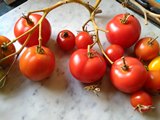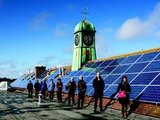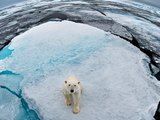The Loss of Arctic Ice
With acknowledgements to Peter Wadhams, "A Farewell to Ice".
“Peter Wadhams has written a passionate, authoritative overview of the role of ice in our climate system, past, present and, scarily, the future.
The book is a compelling combination of personal experience, the unique and strange physical characteristics of glacial and sea ice,
and his understanding of where the earth is heading if serious action is not taken.”
Carl Wunsch, Professor Emeritus of Physical Oceanography, Massachusetts Institute of Technology
It was purely by chance that I saw Peter Wadhams being interviewed on Breakfast television at a time when his book, “A Farewell to Ice” was about to be published early in September 2016. The data he presents on the extent of sea ice in the Arctic and how it has varied since 1979, gives compelling evidence that climate change is underway.
Understandably, Wadhams presents data only up to July 2016 but by visiting
“National Snow and Ice Data Center”
up to date information is available.
The amount of sea ice follows a cyclic path where, as one would expect, the maximum occurs during the Winter months
(actually early March) and the minimum around mid September.
On 23rd January 2017 the amount of sea ice, given by the small blue line on the left of the diagram, was lower than it has ever been at this date. The previous lowest was 2016.
Looking at the data for 2016 (given by the red line), the extent of ice was lower than the average for the whole of the year and most significantly for the months May and September. The grey band represents ±2 standard deviations which is a measure of the variation over the years for the date recorded. Some variation from year to year is to be expected. Anything beyond this band will have been caused by some influence (such as global warming) which is now having more effect than it did in previous years. For May 2016 and December 2016, the chance that the low level of ice was simply a random variation is less than 1 in 10,000 i.e. next no chance.
Unfortunately, the loss of Arctic ice is not just a symptom of global warming. As Peter Wadhams explains,
there are several positive feedback mechanisms where the loss of ice will cause further global warming and these include:
(a) less ice means that the Arctic surface is less reflective and will absorb more of the sun's energy;
(b) as the permafrost thaws, methane gas, a powerful greenhouse gas which is trapped below the frozen layer, will be lost to the atmosphere.
Urgent action is essential.





